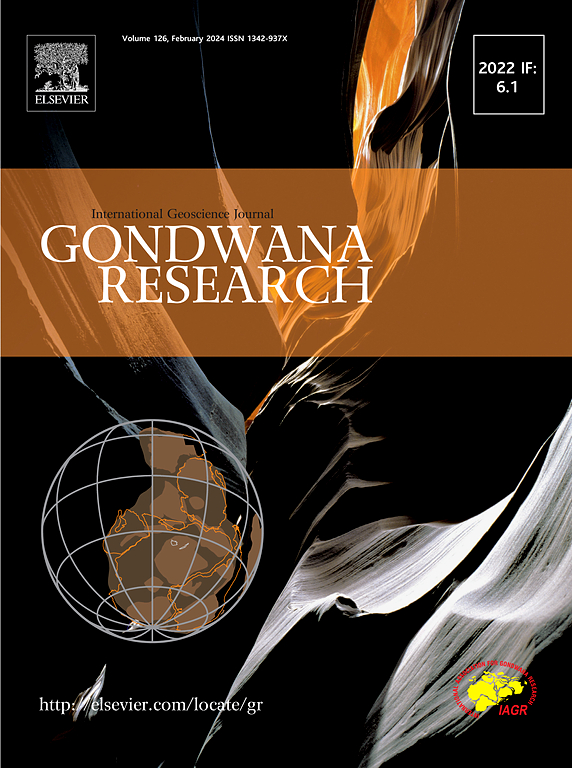Pre-Himalayan crustal evolution in the northern margin of India: Implications from zircon U–Pb, Hf and O isotope study of Chhota Shigri granitoids, Himachal Himalaya, Northwest India
IF 7.2
1区 地球科学
Q1 GEOSCIENCES, MULTIDISCIPLINARY
引用次数: 0
Abstract
A systematic geochemical, geochronological (U−Pb), and isotopic study (Lu−Hf and O) of zircons from the northern margin of India has been carried out to understand the pre-Himalayan crustal evolution along the area. The rocks were characterized as granitoid and yielded two significant age peaks: 1018–715 Ma and 516–476 Ma, with sparse inherited cores of Paleoproterozoic to Archean ages, defining two major magmatic events (Tonian and Cambro-Ordovician) in the NW Himalaya. While Tonian ages are preserved in the zircon cores, the rims and numerous whole grains record the younger Cambro-Ordovician event. The Tonian zircon cores display εHf values ranging from –5.9 to +8.3, indicating both juvenile mantle-derived and recycled crustal sources. The Tonian zircon cores yield single-stage Hf model (TDM) ages of 1.66–1.19 Ga and δ18O values of 5.75–10.88‰, suggesting that Tonian granitoids formed from mixed sources comprising juvenile material, recycled ancient crust and δ18O-rich supracrustal components. The Cambro-Ordovician zircons yielded εHf values from –27.4 to –4.0 and single-stage Hf model (TDM) ages of 2.16–1.21 Ga, demonstrating extensive reworking of both Neoproterozoic crust and ancient crust occurred during the Cambro-Ordovician magmatism. Their elevated δ18O values (8.05–11.35‰) further support widespread crustal remelting with substantial incorporation of δ18O-rich supracrustal materials. These evidence the preservation of supercontinent (Rodinia) components within the NW Himalaya.

求助全文
约1分钟内获得全文
求助全文
来源期刊

Gondwana Research
地学-地球科学综合
CiteScore
12.90
自引率
6.60%
发文量
298
审稿时长
65 days
期刊介绍:
Gondwana Research (GR) is an International Journal aimed to promote high quality research publications on all topics related to solid Earth, particularly with reference to the origin and evolution of continents, continental assemblies and their resources. GR is an "all earth science" journal with no restrictions on geological time, terrane or theme and covers a wide spectrum of topics in geosciences such as geology, geomorphology, palaeontology, structure, petrology, geochemistry, stable isotopes, geochronology, economic geology, exploration geology, engineering geology, geophysics, and environmental geology among other themes, and provides an appropriate forum to integrate studies from different disciplines and different terrains. In addition to regular articles and thematic issues, the journal invites high profile state-of-the-art reviews on thrust area topics for its column, ''GR FOCUS''. Focus articles include short biographies and photographs of the authors. Short articles (within ten printed pages) for rapid publication reporting important discoveries or innovative models of global interest will be considered under the category ''GR LETTERS''.
 求助内容:
求助内容: 应助结果提醒方式:
应助结果提醒方式:


